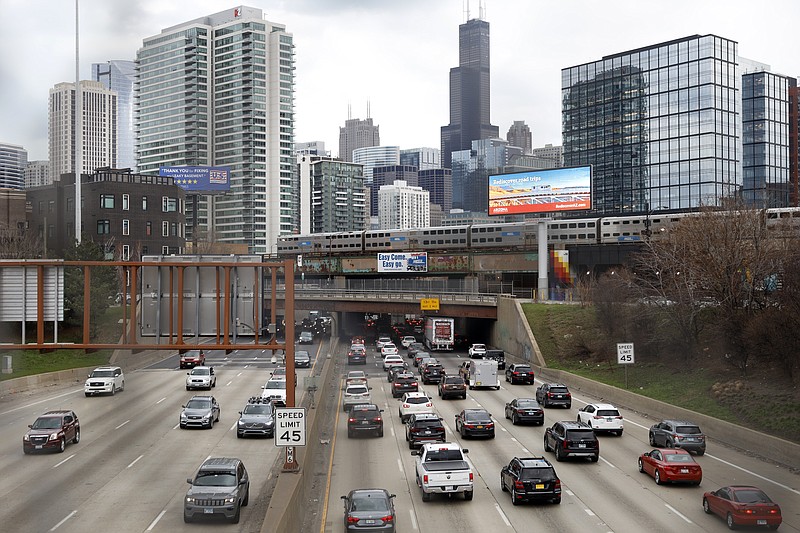Each year since 1998, the American Society of Civil Engineers has issued its assessment of the state of U.S. infrastructure. For the first time in 20 years, the 2021 report card improved slightly: from D+ to C-. Woohoo. While marginal progress has been made primarily at the state and local government level in better allocating limited resources, too much American infrastructure remains in a dismal state.
The society's assessment concludes with a pointed but self-evident conclusion: The only remedy for underinvestment is increased investment. Failure may leave us watching China from behind.
Only two categories got decent marks: Rail transport received a B, while ports landed a B- grade. Both sectors benefited greatly from extensive private ownership and capital investment driven by potential profits. Most public infrastructure, on the other hand, still is languishing. Aviation, schools, inland waterways and wastewater treatment systems earned D+ grades. Close behind were solid D marks for roads, dams and levees. Bringing up the rear, U.S. transit systems claimed a big fat D-.
According to the report, the United States must roughly double its annual investment between now and 2040 to attain a structural framework that efficiently supports economic growth and provides some hope for closing the gap with China.
China invested 8.5% of its GDP per year on physical and digital infrastructure between 1998 and 2011 and continues to spend nearly 6% per year on transportation alone. According to the World Bank, that investment helped China slash its poverty rate from 40% in 1999 to 0.5% in 2015. By contrast, the United States at its post-war peak during the mid-1960s invested slightly less than 6% of its output in building and supporting the nation's critical support systems. Today, America invests around 2%.
Beijing's commitment to investment has also paid handsome dividends in terms of academic and technical development. According to the American Academy of Arts and Sciences, China has already surpassed the U.S. in the number of bachelor's degrees awarded and the number of researchers and publication of papers in scientific journals. And China is still stepping on the gas. The nation is expected to soon overtake the United States in total R&D spending. Once a lead is lost in those critical areas, catching up is nearly impossible.
Much of America's network of bridges, roads and electric grids was constructed decades ago. Since that time population has expanded and technology has advanced but the infrastructure has not kept pace. Today, significantly more capital is committed to maintenance and repair than construction of new assets. One need only reflect upon the catastrophic Texas power grid failure in February to observe the price of sustained neglect of critical systems and facilities.
As the old saying goes, you can pay me now or pay me later. ASCE has estimated that continuing our current underinvestment over the next 20 years will sap the U.S. economy of $10 trillion in GDP, reduce exports by $2.4 trillion and cost more than 3 million American jobs. The bill for an average household is pegged at $3,000 per year by 2039.
Americans who travel are aware of the gap between us and our international competitors. Of the top 50 airports in the world, only four are in the U.S., the best of which ranks 33rd according to the Business Roundtable. Traffic delays and related excess fuel costs swipe $1,000 per year out of motorist's pockets. U.S. passenger trains run at half the average speed of European rail systems and our broadband internet coverage is ranked 18th in the world.
Another saying goes: "It's simple, it just ain't easy." In the last major effort in 2015, former Senator Bob Corker, R-Tennessee, and Senator Chris Murphy, D-Connecticut, proposed the first significant increase in the federal gas tax since 1993 and were soundly rebuffed. After protracted debate, the most significant legislation in decades finally became law in November with the signing of the $1.2 trillion, 10-year bipartisan infrastructure bill that represents a welcome down payment. However, the fate of President Biden's proposed Build Back Better plan remains uncertain largely due to the inclusion of substantial spending that may be laudable but is not germane to addressing our critical infrastructure deficit.
Note that if you're looking for a profitable investment, infrastructure is hard to beat. Economists estimate that each dollar of infrastructure investment returns $2 to $3 in economic growth. One of the greatest infrastructure investments of all time was the Apollo program, which generated between $7 and $40 per dollar invested depending on estimates and keeps on paying dividends more than 50 years later.
The pioneers of space flight understood the weight of the responsibility they shouldered in sending a man to the moon. The seminal aphorism which emerged from Apollo is equally applicable to our present infrastructure challenges from within and without: Failure is not an option.
Christopher A. Hopkins is a chartered financial analyst in Chattanooga.
